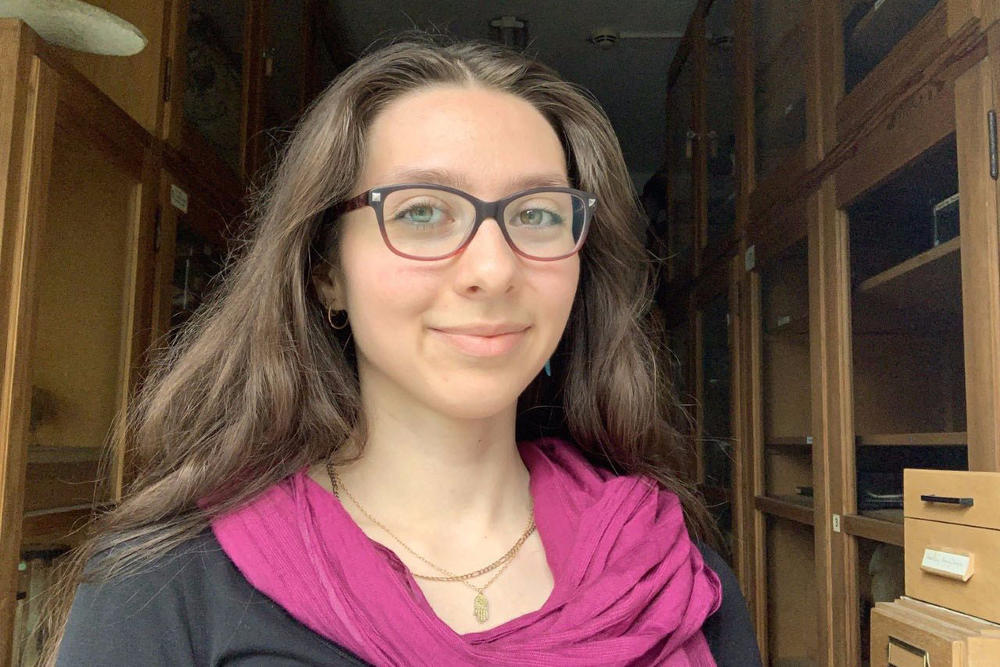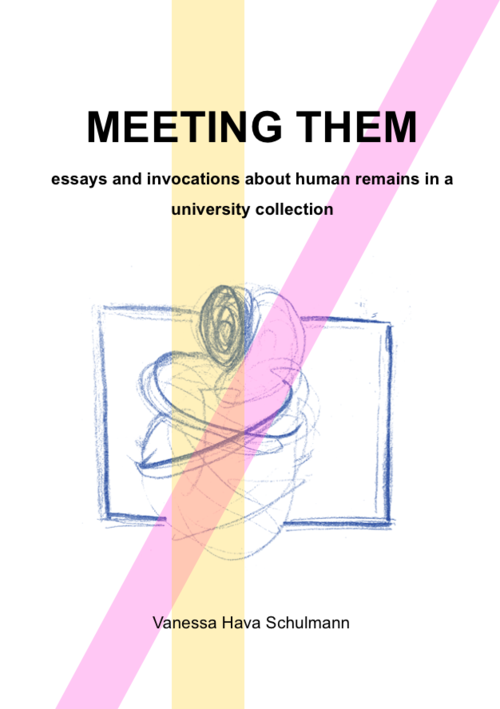“When I first saw the human bones, I wanted to know where they came from.”
For the past four years Vanessa Hava Schulmann has been conducting research on bones in the Zoological Teaching Collection at Freie Universität Berlin. On Monday, July 14, 2025, she presented her findings and hosted a discussion.
Jul 29, 2025
Vanessa Hava Schulmann in the storage room of the Zoological Collection at Freie Universität Berlin. A human biologist, Schulmann conceptualized the seminar series “Meeting Them,” which addressed the use of human remains in academic teaching.
Image Credit: Personal collection
The Zoological Collection at the Institute of Biology at Freie Universität includes many nonhuman specimens. However, the collection also includes human remains, i.e., human bones, which in the past were used for teaching purposes in human biology. The origins of these bones remain largely unknown. What if, for example, they are human remains stolen during the colonial period? This issue prompted students and researchers at the Institute of Biology to question where the bones came from and to consider whether it is acceptable from an ethical point of view to use them in teaching. Vanessa Hava Schulmann is a biologist at Freie Universität, where she also studied and earned her degree. Along with a team of human biologists and several other biologists, she organized a project on provenance research to investigate the matter in depth. After four years of work, they have now concluded the project. The final event took place on July 14, 2025, in the Zoology Lecture Hall, Königin-Luise-Straße 1-3.
Ms. Schulmann, what led you to choose this field of science?
I have always been interested in the interface between biology and philosophy and actually studied philosophy for awhile. One of these interfaces is bioethical issues. When I first saw the human bones, I wanted to know where they came from. Without knowing that, I find it difficult to assume that we “own” them. So I decided to conduct research on their origins.
How did you go about researching the true origins of the remains?
That is difficult and varies from collection to collection. The first step was to determine whether a bone was human, as the institute’s collection also contains many nonhuman animal bones. Next, I checked for clues as to the origin, for example, whether there was a number on the bone, a documented location, or whether the bone had been purchased from a company or taken over from another collection. For most of the items in our collection, none of this information was available. After that I looked for less obvious clues. In one case, for example, I found a small remnant of a sticker that referred to a company.
After I had exhausted all of my other possibilities, I spoke to experts in the identification of human bones.
Do you think that in the future it will be possible to clarify all of the unknown origins?
Probably not. Take, for example, the skeleton of a hand about which we have no further information. The accompanying index card simply says, “Hand skeleton Homo Sapiens.” It is possible that it was part of an entire skeleton and fell off. Any number of other things could have happened to it, but if no one wrote anything down, it is impossible for us to know what that might have been.
We need to ask ourselves what we can ascertain. Of course, it would be nice, if we could find out everything, including the origin of the bone and the history of the person it came from, but that is often not possible. However, we do try to find out as much as we can.
What were you able to achieve with your provenance project on the Zoological Collection?
I think that the most important milestone is that people at the institute are discussing the collection again, and it is not being left in its previous state. We are questioning whether it is acceptable to “own” bones from people who did not give their consent.
Jonathan Heyd conducted the interview. The original German version appeared in campus.leben, the online magazine published by Freie Universität Berlin.
Book about the Project
MEETING THEM is a book by Vanessa Hava Schulmann that describes her research on a more personal level than the academic papers she wrote previously. The book is available for free on the open source platform of Freie Universität Berlin. http://dx.doi.org/10.17169/refubium-47859


